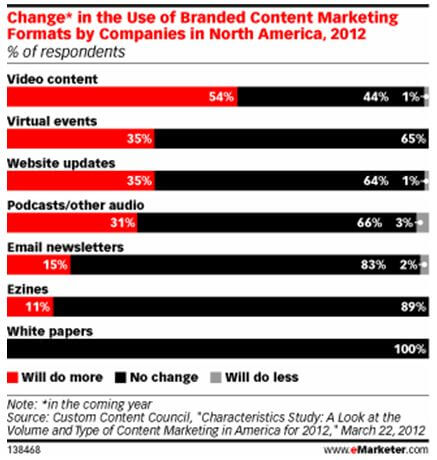Part IV: Inbound Marketing — Content Draws Attention
In the “Attention Economy,” the challenge facing marketers is finding ways to concentrate consumer minds – amidst billions of competing stimuli – on specific products and brands in order to prompt eventual purchasing decisions.
The DigitalEYE Media team of Orange County Internet marketing specialists wants businesses to know how to develop a sound Content Marketing strategy.
Inbound Marketing means attracting customer attention to you. This approach contrasts with the old-school Outbound Marketing technique of capturing attention through interruption (ads, commercials, etc.).
Instead of using traditional media like radio, print, TV, direct mailers, etc., you instead market via the Internet, creating powerful Web content strategies and using blogs and social media to attract qualified leads to your website and business.
Content marketing is a key component of Inbound Marketing. You need to create the content, monitor it for effectiveness and continuously refine it to meet the needs of your targeted prospects.
Says the Content Marketing Institute:
“Content marketing technique involves creating and distributing relevant and valuable content to attract, acquire and engage a clearly defined and understood target audience — with the objective of driving profitable customer action.”
Effective content marketing uses informational blog posts, videos, etc. to teach consumers and earn the trust of search engines and customers, ultimately resulting in more business and sales.
According to a March 2012 report from ContentWise and the Custom Content Council, North American marketers spent $40.2 billion to produce and distribute content marketing last year, up slightly from $40.1 billion in 2010.
Keeping with tradition, print garnered the majority of budgets (58.7 percent) in 2011. Investment in electronic content formats, such as websites and email, were down slightly, yet spending on other forms of content marketing – which includes events and video – rose 44.4 percent.
Custom Content Council and ContentWise found 52 percent of North American companies used video for content marketing in 2011, a number that has increased sharply since 2009, when it accounted for only 37 percent of North American marketers’ content investment.
A good portion (35 percent) of North American companies planned to invest more in website content this year, with an even larger percentage (54 percent) expecting to do so with video.
One area of opportunity for website updates and growth is mobile. As U.S. consumers continue to adopt smartphones and tablets at a rapid rate, mobile website traffic is bound to increase. For example, the portion of paid search clicks coming from mobile devices in the U.S. rose from 5.3 percent in January 2011 to 12.3 percent by December of the same year, according to Marin Software.
Internet marketers need new content to enforce and build upon keyword strategies, acquire links and attract attention in social media.
Marketo has published an Infographic: “Is Content Marketing Traditional Advertising’s New Rival?” The graph attempts to answer the question: “Why should companies use content marketing?” The answer:
— Risk mitigation: Content marketing develops trust by providing buyers with information that will help them make the right decisions, thus reducing organizational and personal risk.
— Lead Generation: Content drives traffic as well as captures leads through forms.
— Lead Nurturing: As a lead develops, strong content will educate and inform, developing a robust lead nurturing program.
— Lead Scoring: This metric is based on how a prospect intereacts with content as well as through nurturing campaigns.










